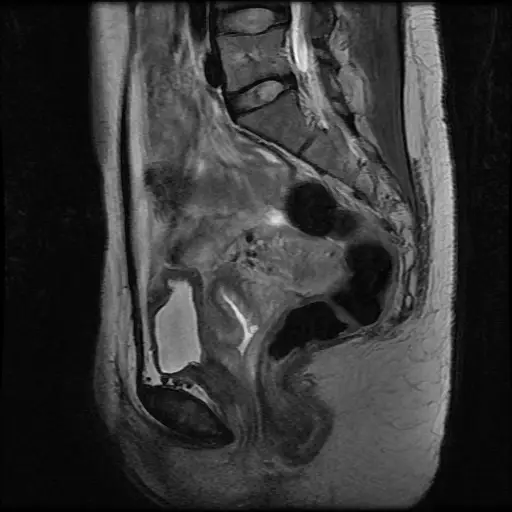How to Interpret Pelvic MRIs: 3 Essential Techniques
Understanding pelvic MRIs is essential for accurately diagnosing and treating conditions in the pelvic region. This guide introduces the advantages of MRIs over X-rays and explains three key techniques for interpreting these detailed images.
Understanding Pelvic MRIs
A pelvic MRI provides comprehensive imaging of the pelvic area, offering detailed views of bones, soft tissues, and organs. This section outlines what pelvic MRIs show and their advantages for diagnosing various conditions.

What Do Pelvic MRIs Show?
- Soft Tissue Detail: Superior imaging of muscles, ligaments, and organs.
- Organ Visualization: Clear views of pelvic organs, useful in diagnosing various conditions.
- Bone Marrow Changes: Detects changes within the bone marrow not visible on X-rays.
- Disease Detection: More effective in identifying infections, tumors, and other abnormalities.
When Will You Get One?
- Persistent Pelvic Pain: Especially if not adequately explained by an X-ray.
- Gynecological Symptoms: Such as abnormal bleeding or masses.
- Pre-surgical Planning: Provides detailed anatomy for surgical planning.
- Monitoring Disease Progression: Ideal for assessing changes over time in chronic conditions.
Techniques to Interpret Pelvic MRIs
Interpreting pelvic MRIs involves a deeper understanding of advanced imaging techniques. Here are three techniques for professionals at different levels of expertise.
1. Utilizing X-ray Interpreter
X-ray Interpreter now extends its AI-driven analysis to MRI images. The process ensures precision:
- Registration: Register on X-ray Interpreter to access AI analysis for MRIs.
- Uploading MRIs: Upload your pelvic MRI images.
- Reviewing Interpretation: Receive the AI-generated interpretation and download your report.
- Professional Consultation: Always advisable to consult with medical professionals for comprehensive understanding.
Please check out our get started guide.
2. Using ChatGPT Plus
ChatGPT Plus now supports MRI image analysis with its latest GPT-4V model, offering detailed and interactive insights:
- Subscription: Subscribe to ChatGPT Plus for advanced image analysis features.
- Uploading MRIs: Interface with GPT-4V on OpenAI to upload your MRI images.
- Requesting Analysis: Engage with the model for a thorough analysis.
- Review and Confirmation: Assess and refine the analysis as needed.
- Professional Validation: Validation by medical experts is recommended.
Read more on our post about using ChatGPT Plus for MRI interpretation.
Alternatively, as several other AI models with vision capabilities emerge, you can also try other models, such as Grok by xAI, Claude by Anthropic, Gemini by Google Deepmind.
3. Mastering MRI Interpretation Yourself
For healthcare professionals aiming to enhance their MRI reading skills, self-learning is invaluable:
- Education: Pursue advanced training in MRI interpretation.
- Practice: Regular practice under expert guidance.
- Resources: Utilize advanced imaging books and online courses.
- Feedback: Seek feedback to refine skills.
- Continuous Learning: Engage in ongoing education to stay current with imaging techniques.
Recommended Resources for Self-Learning:
-
Normal and Variant Pelvic Anatomy on MRI - Radiology Key: This resource offers a comprehensive overview of both normal and variant pelvic anatomy as visible on MRI, crucial for accurate interpretations and diagnoses.
-
What You Need to Know About Pelvic MRI - WebMD: WebMD provides essential insights into the process and purposes of pelvic MRIs, helping patients and professionals understand what to expect.
-
Pelvis MRI Scan - Healthline: Healthline details the procedures and uses of pelvic MRI scans, including preparation and what findings one might anticipate from the imaging.
Comparative Analysis
Choosing the right technique for interpreting pelvic MRIs is vital for accurate diagnosis. This section compares the three methods:
| Criteria | X-ray Interpreter | ChatGPT Plus | Self-Reading |
|---|---|---|---|
| Accuracy | High (AI-based)1 | High (AI-based)1 | Varies (Skill-dependent) |
| Ease of Use | Easy | Moderate | Challenging |
| Cost | Starting from $2.50 per image | $20 per month | Free (excluding educational costs) |
| Time Efficiency | Fast | Moderate to Fast | Slow to Moderate |
| Learning Curve | Low | Low to Moderate | High |
| Additional Resources | Provided | Partially Provided (through OpenAI) | Self-sourced |
Each method has its strengths and weaknesses, with AI options providing rapid and precise interpretations, while self-reading encourages in-depth learning for medical professionals.
Conclusion
Pelvic MRI interpretation is critical for diagnosing complex conditions in the pelvic region. This guide presents three techniques suited to different professional needs and skill levels. AI methods offer quick, precise interpretations, while self-learning is geared towards those seeking in-depth knowledge.
When selecting a technique, consider your level of expertise, the need for timely interpretation, and the resources available. Ethical and legal standards must always be maintained to ensure patient safety and confidentiality.
Related Articles
- How To Interpret Abdominal MRIs
- How To Interpret Pelvic X-Rays
- How To Interpret Pelvis CT Scans
- How To Interpret Pelvic Ultrasounds
Resources and Further Learning
For further exploration and understanding of pelvic MRI interpretation, consider the following resources:
-
Magnetic Resonance Imaging (MRI) - MedlinePlus: A comprehensive overview of MRI, the types of MRIs, and how they are performed. Useful for understanding the specifics of pelvic MRI and preparation for the test.
-
MRI of the Abdomen and Pelvis - RadiologyInfo.org: Detailed information about abdominal and pelvic MRI scans, their uses in medical diagnosis, and what patients can expect during the procedure.
-
Pelvic MRI - Queensland X-Ray: Provides insights into the specific applications of pelvic MRI, including indications for the procedure and what patients can expect.
These resources provide valuable information for both patients and healthcare providers, enhancing understanding of pelvic MRI scans and their role in diagnosing and managing conditions.